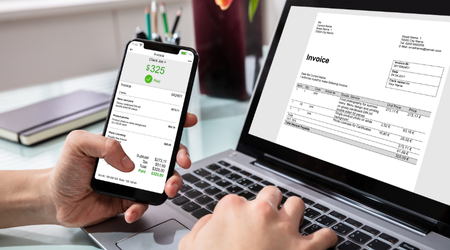
THE conscious loan emerges as an innovative, external financial approach for those seeking balance between immediate needs and long-term financial health.
Advertisements
Unlike traditional loans, which are often taken out on impulse or desperation, conscious loans are planned.
As well as being informed and focused on the borrower’s financial objectives.
In an economic scenario where uncontrolled debts affect millions of Brazilians, understanding and applying this concept can be the key to transforming personal budgets.
This article explores what defines conscious lending, how it works in practice, and why it can be a game-changer for your financial stability.
What Defines a Conscientious Loan?

First of all, the conscious loan is harmed by intentionality.
Instead of resorting to credit as a last-minute solution, the borrower carefully evaluates his/her payment capacity, the purpose of the loan and the conditions offered.
For example, imagine a person who needs to renovate their home to increase its market value.
Instead of taking out the first loan available, she researches interest rates, terms and impacts on her monthly budget.
In this sense, this approach minimizes risks and maximizes benefits.
Furthermore, transparency is an essential pillar.
Banks and finance companies often hide additional costs, such as administrative fees or built-in insurance.
++ What to Do with Loan Money So You Don't Regret It Later
Therefore, a conscientious borrower reads contracts carefully, questions ambiguous clauses and seeks out reliable institutions.
According to the Central Bank, around 30% of Brazilians with active loans in 2024 do not fully understand the terms of the contracts signed.
In short, this data reinforces the importance of an informed stance, which avoids competitive surprises in the future.
Finally, conscious lending is strategic.
It is not just used to “fill holes”, but to transfer financial goals.
Think of borrowing as a tool, like a hammer: used correctly, it builds; used carelessly, it exacts revenge.
Thus, the conscious borrower aligns credit with clear objectives, such as investing in education, opening a business or consolidating high-interest debts.
This mindset turns the villain's credit into an ally's.
Why is this type of loan relevant today?

We live in a context where debt is almost epidemic.
According to the National Confederation of Commerce (CNC), in 2024, 78% of Brazilian families had some type of debt, with 25% compromising more than 30% of their income with installments.
In this scenario, the conscious loan emerges as a practical response to break the debt cycle.
++ Home Business Ideas to Start with Little Money
In short, it encourages financial planning, helping people avoid traps such as abusive interest rates or defaults.
Furthermore, financial education, although growing, is still insufficient in Brazil.
Many borrowers are unaware of basic concepts, such as the difference between simple and compound interest.
In this sense, conscious lending fills this gap by requiring the individual to be informed before negotiating any contract.
For example, John, a small entrepreneur, decided to consolidate his debts into a single loan with lower interest rates.
After comparing offers, he reduced his monthly spending on 40%, freeing up resources to invest in his business.
This case illustrates how planning can generate real savings.
Furthermore, another factor that makes conscious lending relevant is personalization.
Each person has a unique financial reality, and credit should reflect that.
Modern institutions, such as fintechs, offer planned simulations that help the borrower visualize the impact of the loan on the budget.
Thus, credit ceases to be a generic decision and becomes a tailored solution.
Why, after all, would we continue to make financial decisions blindly, when we have the tools to act with clarity?
How Does Conscious Lending Save Your Budget?

Firstly, the conscious loan protects the budget to avoid unpayable debts.
In this sense, when choosing a loan with installments that fit within the monthly income, the borrower maintains financial control.
For example, Maria, a teacher, needs R$ 10 thousand to cover medical expenses.
After analyzing her budget, she opted for a loan with installments of R$ 500, which represented only 15% of her income.
In short, this decision preserved their financial stability without compromising other essential expenses.
Furthermore, conscious lending can be a tool for financial restructuring.
Many people accumulate high-interest debts, such as credit cards or overdrafts.
Therefore, a conscious loan, with lower rates, allows you to consolidate these debts, facilitating the total cost.
Think of your budget as a boat with holes: conscious lending not only plugs the holes, but also strengthens the structure to sail safely.
Finally, the psychological impact cannot be ignored.
Uncontrolled debts generate stress, anxiety and even family problems.
Conscious lending, because it is planned, offers peace of mind.
In short, the borrower knows exactly how much they will pay, for how long, and how it will fit into their life.
This predictability is an antidote to financial uncertainty, allowing the focus to return to what really matters: building a solid future.
Practical Steps to Adopt Conscious Lending
The first step is to assess the real need for the loan.
For example, ask yourself: “Is this loan for an emergency, an investment, or an impulsive desire?”
This reflection avoids hasty decisions.
Tools like budgeting spreadsheets or financial management apps can help you map out your income and expenses, ensuring that your loan doesn’t put a strain on your budget.
Then research and compare.
Interest rates, terms and conditions vary greatly between institutions.
In this sense, use online simulators, available on bank or fintech websites, to test different scenarios.
Furthermore, choose institutions regulated by the Central Bank, which offer greater security.
A conscious borrower dedicates time to this step, knowing that a well-informed choice can save thousands of dollars.
Finally, negotiation.
Therefore, many institutions are open to adjusting conditions, especially for customers with a good financial history.
Request exemption from administrative fees or more flexible deadlines.
This proactive stance transforms the borrower into the protagonist of their financial journey, ensuring that the loan is a solution, not a problem.
| Aspect | Conscious Lending | Traditional Loan |
|---|---|---|
| Planning | Based on detailed budget analysis | Often impulsive, without planning |
| Transparency | Contract read and understood, no hidden costs | May include surprising fees or ambiguous clauses |
| Objective | Aligned with financial goals (e.g. investment) | Generally for immediate emergency coverage |
| Budget Impact | Installments adjusted to income, preserving balance | High installments, risk of default |
Frequently Asked Questions
| Question | Response |
|---|---|
| What makes a conscious loan different? | It is planned, transparent and directed towards financial objectives, with a focus on budget sustainability. |
| Can anyone take out a conscientious loan? | Yes, as long as you research, plan and choose conditions that suit your financial reality. |
| How to avoid traps in contracts? | Read the contract carefully, ask about additional fees and choose regulated institutions. |
| Is a conscious loan more expensive? | Not necessarily. Shopping around for better rates can make you more economical than impulsive choices. |
| Can I use the conscious loan to pay off debts? | Yes, especially for consolidating high interest debt, reducing or totaling costs. |
Long-Term Benefits of this Loan
In the long run, the conscious loan strengthens financial education.
Each informed decision teaches you how to better manage money, creating a virtuous cycle of learning.
In this sense, over time, this reduces dependence on credit and increases the ability to save and invest.
Think of conscious lending as a ladder: each well-planned step takes you closer to financial independence.
Additionally, it contributes to building a good credit history.
Punctual payments improve your Serasa or SPC score, making it easier to access better conditions for future loans.
This ripple effect is powerful: a conscious decision today can open doors tomorrow, whether it’s financing a property or starting a business.
Ultimately, conscious lending promotes financial resilience.
In short, in a world of economic uncertainty, knowing how to use credit wisely is a valuable skill.
It allows the borrower to face unforeseen events without losing control, transforming challenges into opportunities.
After all, who wouldn’t want a budget that can withstand life’s storms?
Conclusion: The Power of Conscious Choice
THE conscious loan It's not just a financial tool; it's a mindset.
In this way, it invites the borrower to take control, research, plan and negotiate, developing credit into a budget ally.
In a country where debt is a reality for most, adopting this approach could mean the difference between financial chaos and stability.
With practical steps, transparency and a focus on clear objectives, conscious lending proves that it is possible to use credit intelligently, without falling into the traps of individualization.
Whether it’s to invest in a dream, overcome an unforeseen event or restructure debts, conscious lending offers a safe path.
The question is: are you ready to make decisions about your financial life and make credit a bridge to the future, instead of a burden?
The choice is yours, and it starts with awareness.
